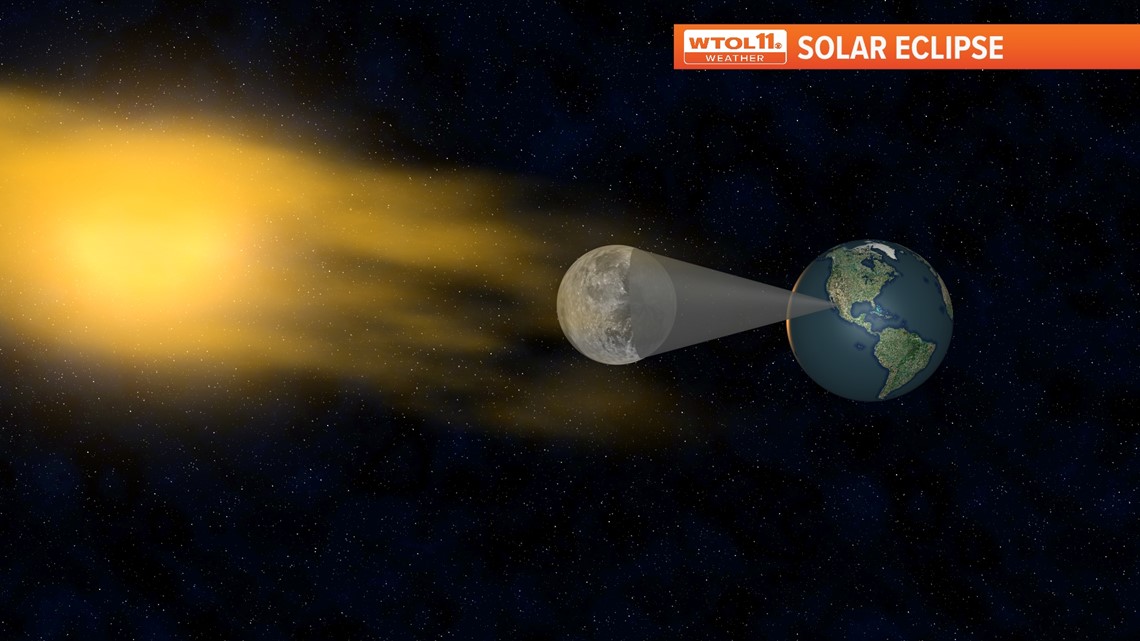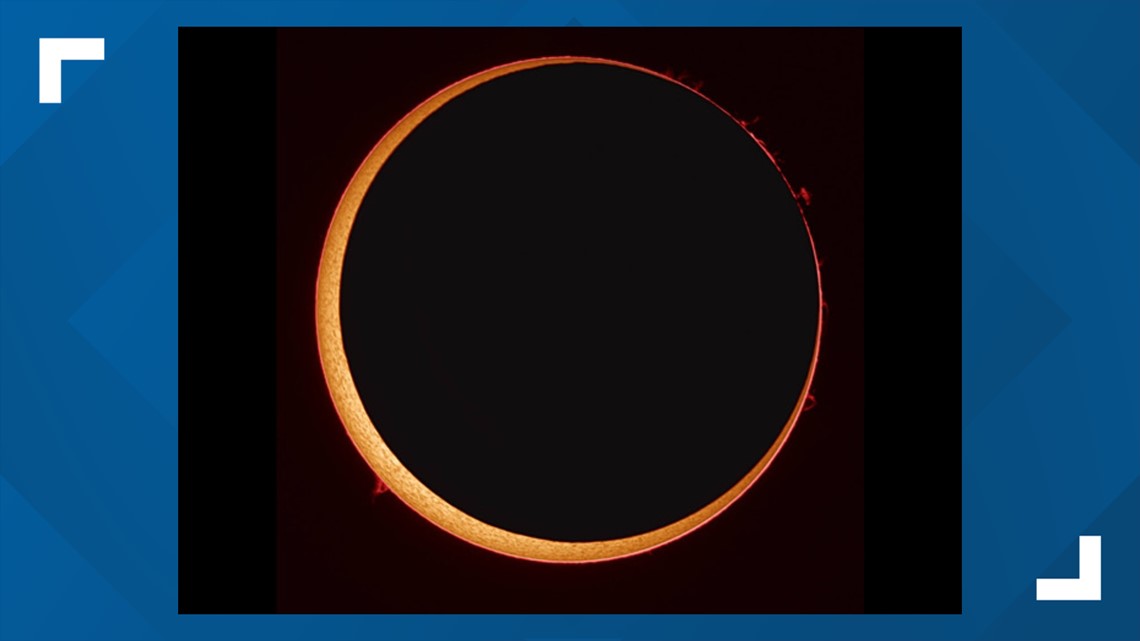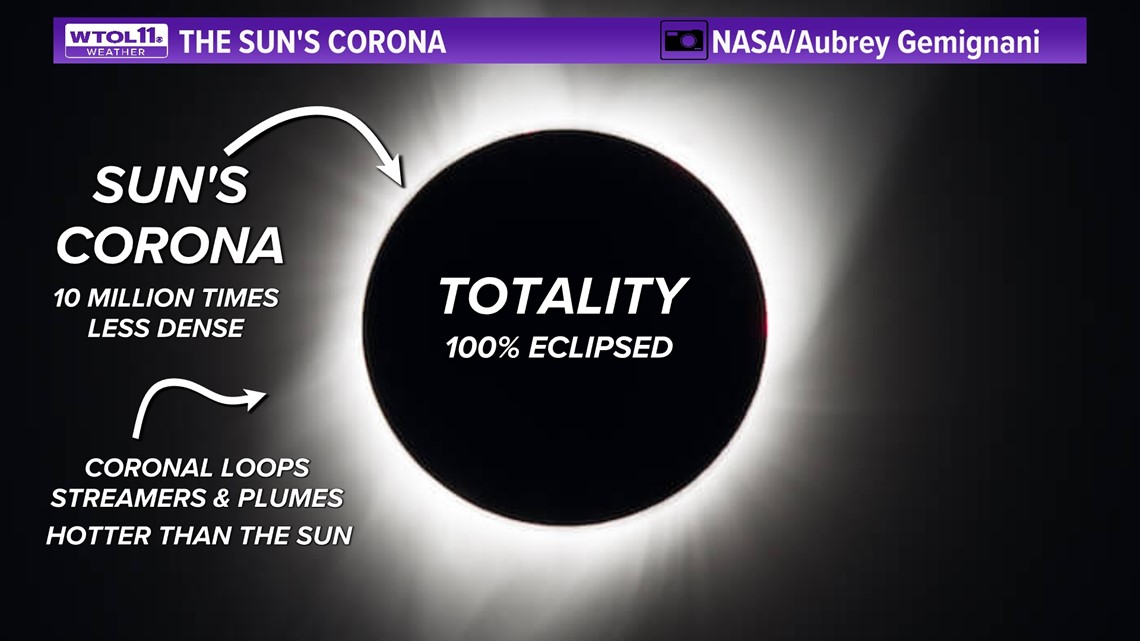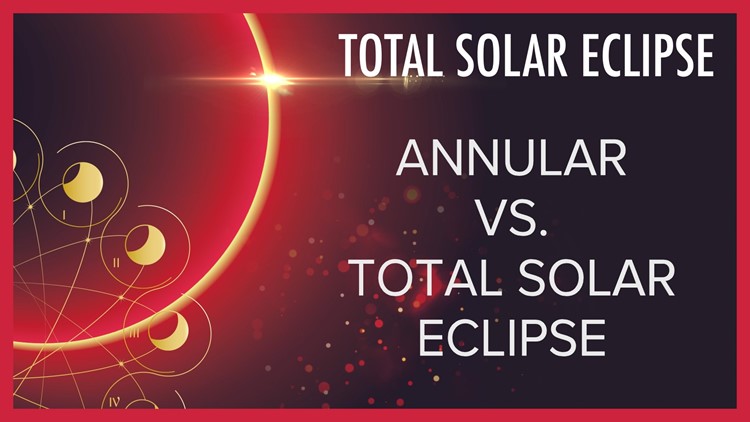TOLEDO, Ohio — On April 8, 2024, a total solar eclipse will pass through several U.S. states, bringing a spectacular and rare sight to your backyard. While those lucky enough to live in the path of totality will see a total solar eclipse, people in areas across the country will witness a partial solar eclipse.
However, total and partial are not the only two types of solar eclipses; another type, an annular eclipse, involves some of the same conditions as a total solar eclipse, but looks much different.
On Oct. 14, 2023, an annular eclipse passed over part of the U.S.--including Ohio, though only as a partial annular eclipse.
During a total solar eclipse, the moon is situated between the sun and Earth at just the right position that the moon completely blocks out--or eclipses--the sun, casting a shadow on Earth. During an annular eclipse, the same conditions must be met: that is, the moon must be between the Earth and sun.


However, an annular eclipse differs in that it occurs when the apparent size of the moon is smaller than that of the sun, occurring when the moon is at its furthest point from the Earth, according to NASA. At its closest, the moon is approximately 221,500 miles from Earth. At its furthest, it is approximately 252,700 miles from Earth. These two distances, known as perigee and apogee respectively, are also important in affecting Earth's tides.
An annular eclipse occurs when the moon is at apogee, which affects what the solar eclipse looks like from Earth. When the moon is close enough to Earth, it is able to completely eclipse the sun as it is visible from Earth. When the moon is further away, its size as it appears in the sky is not large enough to completely cover the sun.
As a result, an annular eclipse looks like a black dot with a "ring of fire" surrounding it. Unlike a total solar eclipse, the sun's corona will not be visible. The photo from NASA below depicts a total annular eclipse.


During a total solar eclipse, the moon's closer vicinity to the Earth with respect to the sun completely blocks out the sun, allowing only light from the sun's corona, which is otherwise not visible without special instruments, to be seen.


As with all solar eclipses, make sure you are using proper solar protection eyewear before ever looking at the sun.
MORE 2024 TOTAL SOLAR ECLIPSE COVERAGE FROM WTOL 11



